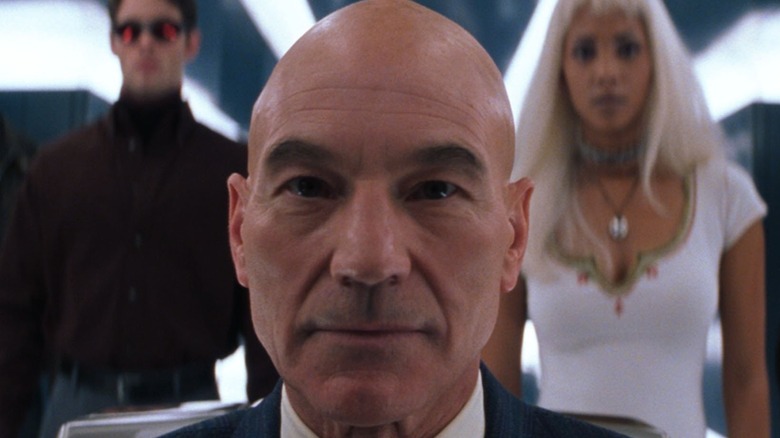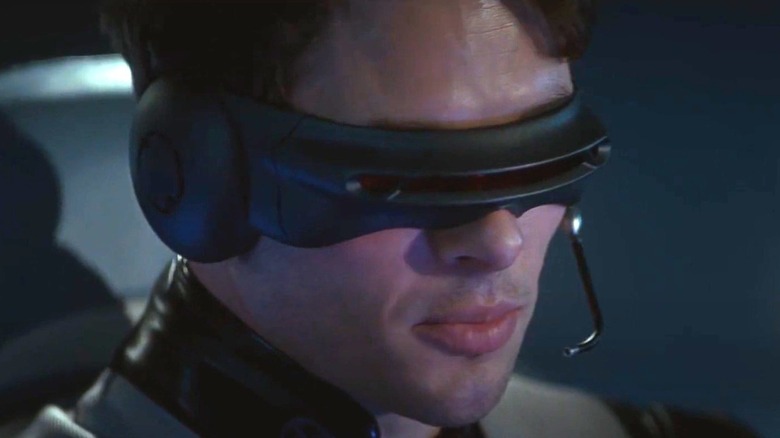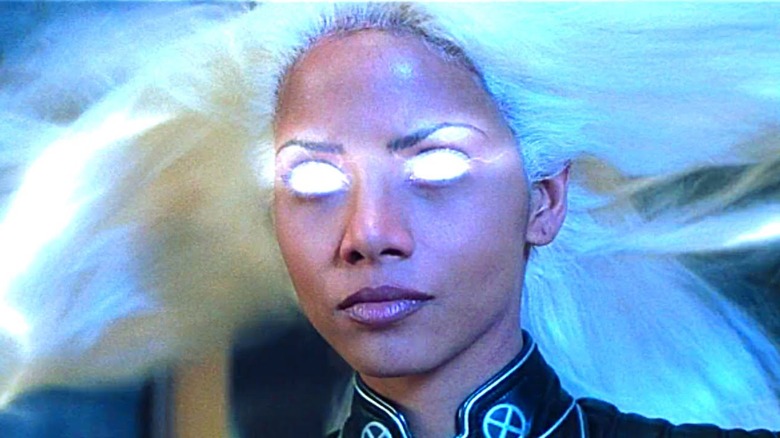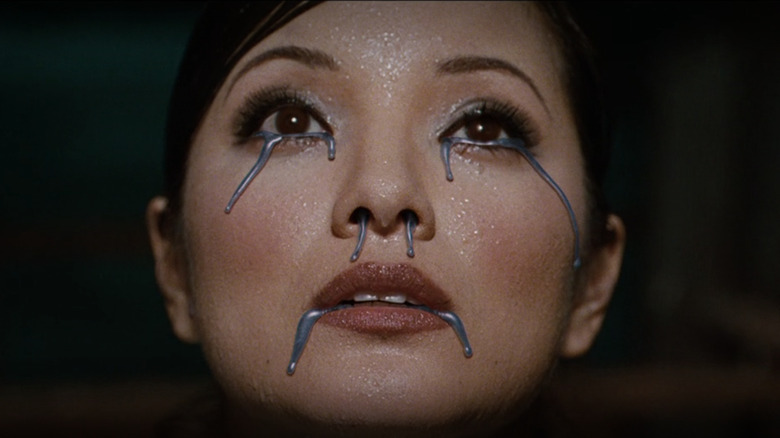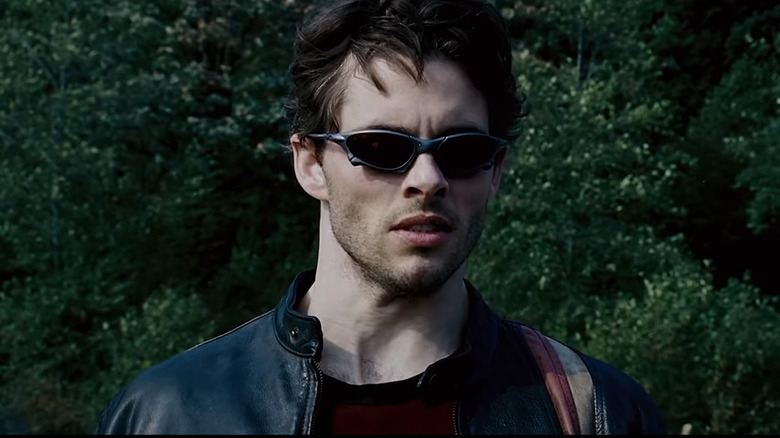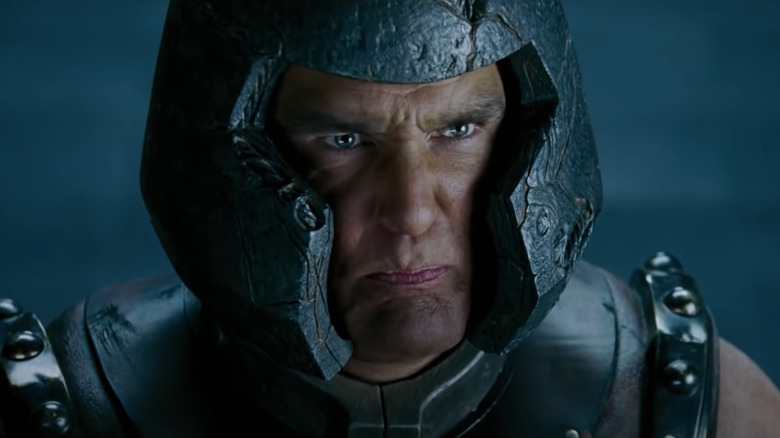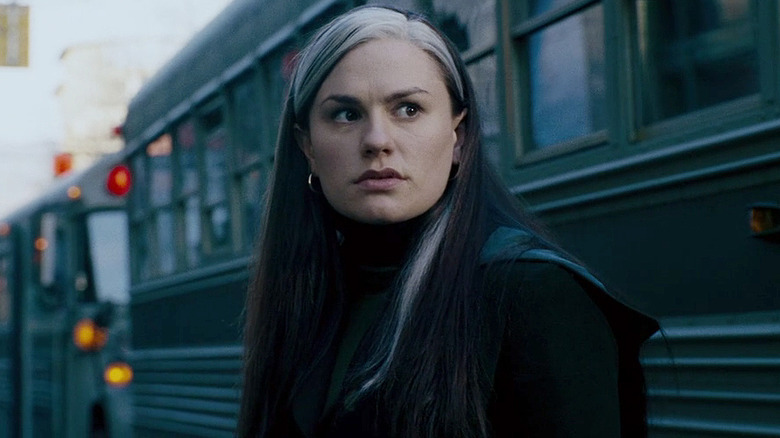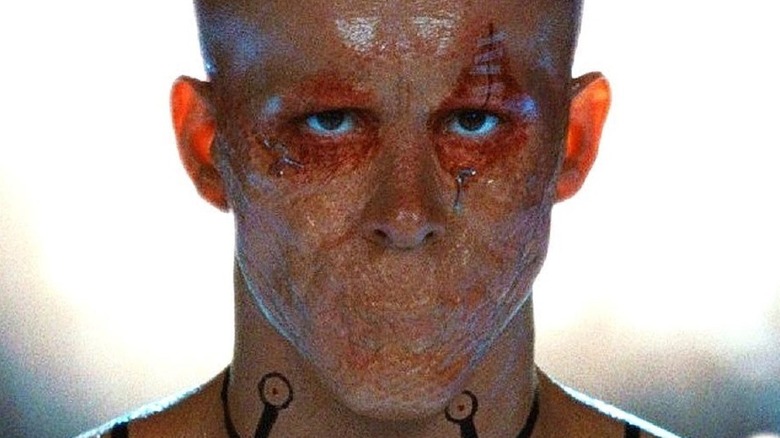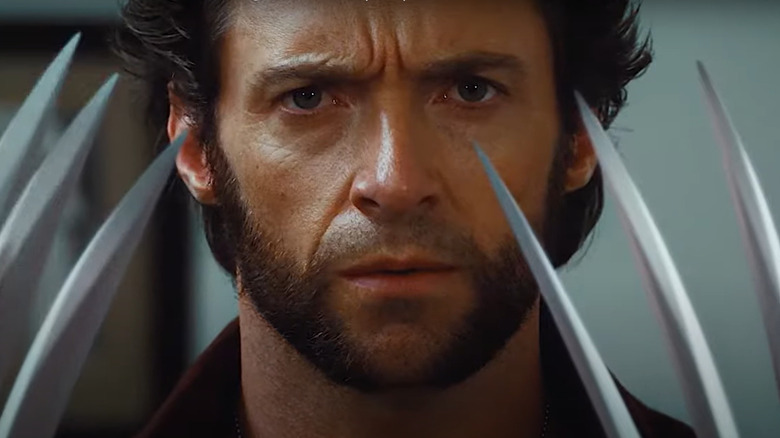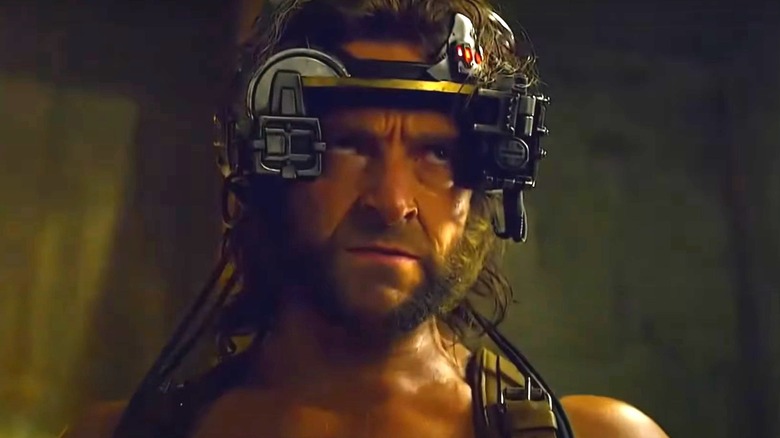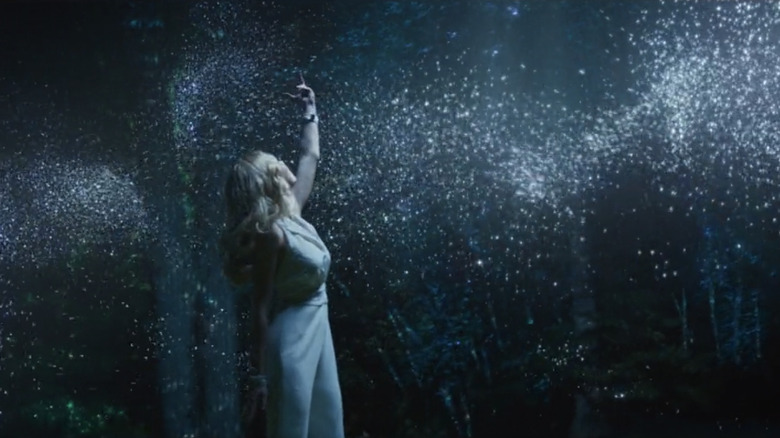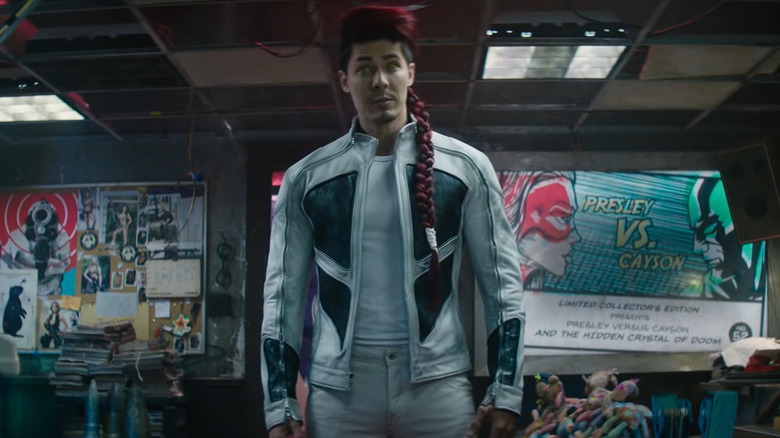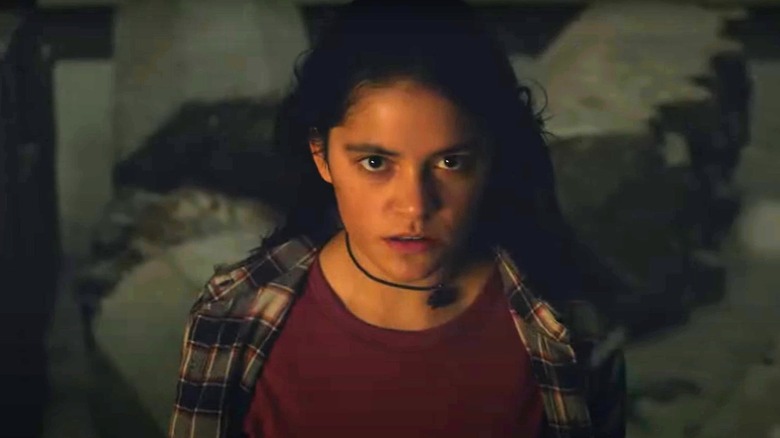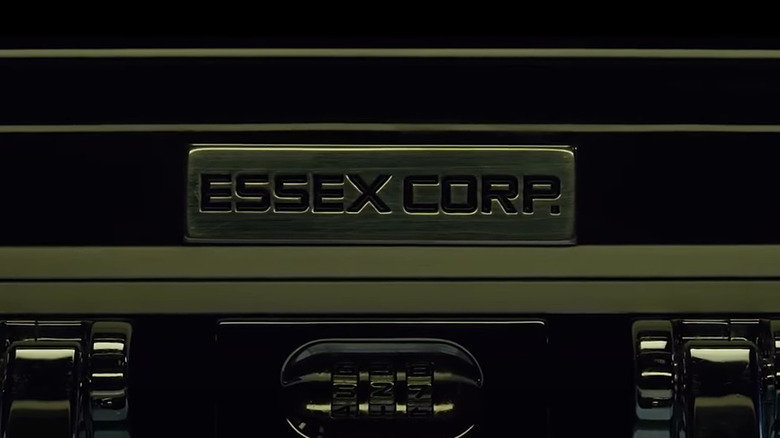The Most Frustrating Moments In Fox's X-Men Movies
Launched in 2000, Fox's "X-Men" series has been one of the most popular and lucrative film franchises of all time. The first installment is arguably the first "serious" comic book superhero film, as it ditched the bright colors and simplistic narratives often associated with the genre. Instead, it embraced the deeper themes of the source material, filling its cast with established veterans and talented up-and-comers. And most enduringly, the first "X-Men" film paved the way for even better superhero movies, including several of its own sequels.
Of course, like many long-running series, the "X-Men" franchise has plenty of lows to counterbalance its highs. Even though audiences were blessed with such films as "X-Men: First Class," "Logan," and "Deadpool," they were also punished with stinkers like "X-Men Origins: Wolverine," "Dark Phoenix," and "The New Mutants," as well as films that were met with a lukewarm reception, like "The Wolverine."
However, now that Disney owns Fox (now known as 20th Century Studios), Marvel Studios has the go-ahead to bring the merry mutants into the Marvel Cinematic Universe. With the MCU's impressive track record when it comes to giving its main characters time to develop and grow, as well as the talent to seamlessly blend separate franchises, the future's looking bright for the X-Men. And what better way to celebrate the legacy of Fox's "X-Men" films (and their arrival into presumably more capable hands) than by taking a look at some of their most frustrating moments?
'What would you prefer? Yellow spandex?'
2000's "X-Men" gave fans of the original comic book source material, and even fans of the classic animated series, plenty to be grateful for in the characters' big screen debut. However, some still had some gripes with the film, in particular the absence of the colorful costumes that typified the characters for decades up to that point. But that was just the wound — the salt came in a scene late in the film, when the X-Men are heading for the Statue of Liberty to stop Magneto. As they depart, Wolverine criticizes the team's all-black, Matrix-y attire with the line, "You actually go outside in these things?" Cyclops responds with, "Well, what would you prefer? Yellow spandex?"
In some ways it's an honest-yet-irreverent point about how the X-Men's signature outfits would look silly in real life, but it's also a slap in the face to the fans who waited years to see their favorite mutants in their iconic uniforms. In 2020, "X-Men" producer, Ralph Winter talked about the decision to go with pitch black costume design: "Of course, there's a joke in the movie about yellow spandex, which was directed at the fans. It wasn't to iterate [sic] them but to say 'Hey, we hear you ... We understand you'd rather have everybody in the traditional garb. But we also have to make a movie that reaches a wide audience to justify the budget.'"
'Do you know what happens to a toad when it's struck by lightning?'
While Halle Berry could've been a solid Storm, she rarely had the opportunity to shine throughout the various "X-Men" films she's appeared in. One particularly cringeworthy moment came in her fight scene with Toad.After conjuring up a windstorm in the Statue of Liberty that has Toad hanging onto a guardrail with his prehensile tongue, she delivers the awkwardly immortal bit of dialogue "Do you know what happens to a toad when it's struck by lightning?" And after sending her opponent out into the water with a lightning bolt, she finishes: "The same thing that happens to everything else."
It's an easy line to laugh at (and we have, for decades) but there's actually more to it than we might think. In an interview with The A.V. Club, Joss Whedon, who worked on an early draft of the script and conceived the line, said, "Everybody remembers that as the worst line ever written, but the thing about that is, it was supposed to be delivered as completely offhand. [Adopts casual, bored tone.] 'You know what happens when a toad gets hit by lightning?' Then, after he gets electrocuted, 'Ahhh, pretty much the same thing that happens to anything else.' But Halle Berry said it like she was Desdemona."
Bad writing, bad acting, or bad directing? You decide.
Lady Deathstrike's death
2003's "X2: X-Men United" is one of the few sequels that equals, if not improves upon, its predecessor, and is generally regarded by fans and critics alike as one of the best X-Men movies ever made. But it's not perfect, and of particular note is the uninspired use of Yuriko Oyama, aka Lady Deathstrike. The character only has a handful of scenes in the film, and beyond her admittedly cool fight with Wolverine, she's boring and bland, with none of the personality — or history — she has in the comics.
In Marvel lore, Yuriko has a highly personal relationship with Wolverine. Her father developed the process that enabled adamantium to be applied to Logan's skeleton, and she has gone to great lengths to try to kill him, including receiving her own adamantium-laced bones and talons, as well as additional cybernetic enhancements, from another dimension. The 1992 "X-Men" animated series, meanwhile, added the idea that Yuriko and Wolverine are former lovers turned to enemies. Either option would be more interesting than the mute henchwoman with long fingernails we actually got, but sadly, she's not around long enough to realize any of that potential, as Wolverine kills her about four minutes after they meet for the first time. Lady Deathstrike's debut in "X2" should have been a climactic moment of storytelling, not a dialogue-free brawl, and her death at Logan's hands should have meant something.
Cyclops is killed offscreen
A whole article could be written on the frustrating moments in 2006's "X-Men: The Last Stand," but some stand out more than others. Case in point: Scott Summers' unceremonious offscreen death. Still grieving over Jean Grey's heroic sacrifice from the end of "X2," Scott returns to Alkali Lake, the place she died. And in true comic book fashion, it turns out that Jean wasn't actually dead. The two lovers embrace and share a passionate kiss, until Jean's alternate "Phoenix" personality (apparently) takes over and kills Scott for no real reason.
Like most actors not named Hugh Jackman, James Marsden rarely had a chance to shine as Cyclops, but he was still an important character in the franchise up to that point, and deserved better than this. It would've been nice to see Scott be with Jean in some capacity during her last moments, like he was in the "Dark Phoenix" storyline from the comics, and if he had to be killed off, it could have at least served a purpose other conveying Jean's descent into villainy. It could have at least happened on camera.
Fortunately, this massive narrative mistake was redeemed at the end of 2014's "X-Men: Days of Future Past" when, after preventing the rise of the Sentinels, Wolverine creates another timeline in which Scott and Jean are both alive and well, giving Marsden a much better final hurrah for his character.
'I'm the Juggernaut, b*tch!'
Time to talk about one of the more infamous moments in the "X-Men" franchise. In "The Last Stand," Vinnie Jones' Cain Marko goes after a young mutant Jimmy during the final showdown at the Worthington facility on Alcatraz Island, while Elliot Page's Kitty Pryde tries to get to him first. When Kitty outsmarts Cain for a brief moment by using her phasing powers to embed him in the floor, he exclaims, "Don't you know who I am? I'm the Juggernaut, b*tch!" and immediately bursts free.
The origin of this line goes back to a 2005 YouTube meme that featured some of the Juggernaut's scenes from the "X-Men" animated series dubbed over with new, more profane lines. The video went viral and caught the attention of the filmmakers, who put it in the movie. But the character's use of the line feels forced and out of place, serving no other purpose than to give a nod to the budding meme culture of the time.
Rogue gets the cure
Likely inspired by both a storyline from Marvel Comics and an episode of the animated series, a major portion of "The Last Stand" deals with Worthington Labs' "cure" for mutants, which purges them of their superpowers and allows them to live normal lives. Rogue is cursed with the ability to temporarily yet involuntarily absorb the abilities and memories of anyone she comes into physical contact with, making her romantic relationship with fellow X-Man Bobby Drake difficult. And when Bobby starts getting closer to Kitty Pryde, Rogue feels even more pressure to cure herself of her powers, which she ultimately does at the end of the film.
Anna Paquin is a talented actress, but was rarely allowed to shine in the "X-Men" franchise, whose scripts have always relegated her to either being a damsel in distress or a sad teenager constantly moping over her inability to touch someone without almost killing them. Seeing her get the cure simply to win back a boy is a sad way to end her arc, especially since we were never treated to any instances of her using her abilities to their fullest extent, and the fact that she really does lose her powers at the end of the film represents a horrendous misreading of the metaphor behind every "mutant cure" storyline.
Deadpool's mouth gets sewn shut
While "The Last Stand" was far from a fan favorite, it was financially successful enough to warrant further expansion of the "X-Men" franchise, and so it was decided to follow up a disappointing film that made tons of money with ... another disappointing film that would still make tons of money! That film was 2009's "X-Men Origins: Wolverine," which was both a letdown for audiences and a box office hit.
One of the few high points of the film (besides Hugh Jackman's always-reliable portrayal of Wolverine) was Ryan Reynolds as Wade Wilson, aka Deadpool. In his first appearance early on, Reynolds lets loose with the charm and wit that would make his future solo outings so beloved. Of course, what ultimately happens to him is the reason "X-Men Origins: Wolverine" ended up on this list: His mouth is sewn shut and he's rendered mute. His signature dual katanas are impossibly embedded into his arms for some reason, too.
It's bad enough that Deadpool is given a whole slew of superpowers that his comic book counterpart doesn't have, but to deprive him of his wicked sense of humor? That's the real crime — Deadpool's nickname is "the merc with a mouth" for a reason. Audiences are lucky that, in the end, they got Reynolds in his full mouthy glory with two highly successful solo films, but for a while it seemed like this would be the definitive cinematic version of Deadpool.
Wolverine's obvious CGI claws
"X-Men Origins: Wolverine" was rumored to have been plagued by various problems during production, which may have contributed to the sub-par final product. While these rumors may or may not be true, one thing we do know for sure is that there are plenty of instances of middling, rushed, or just plain bad CGI throughout the film. One of the more egregious moments of unnecessary digital visual effects comes in the bathroom scene, in which Logan pops his newly adamantium-laced claws. He clinks and clanks them, creating equally bad CGI sparks as Hugh Jackman does his best to keep a straight face while staring at fantasy metal that's not even there. When the kindly couple he's staying with calls him, he accidentally slices through a bathroom sink that the prop department somehow had enough time to build, despite being unable to manage some rubber claws coated with silver spray paint.
While it's totally excusable to use CGI claws in fight scenes where prop claws could be a safety hazard or where the digital stand-ins could more easily blend into the action, this scene subjects the audience to several long shots of Wolverine standing still and looking at claws that have been digitally pasted to his knuckles after the fact. "X-Men," released nine years earlier, had half the budget of this film, and yet the claws featured there were far more convincing.
Wolverine's gratuitous cameo
"X-Men: Apocalypse" includes a subplot at the Weapon X compound, where Hank McCoy, Raven Darkholme, Peter Maximoff, and Moira MacTaggert have been imprisoned by Colonel William Stryker. Of course, Wolverine is also there, and is let loose by Scott Summers, Jean Grey, and Kurt Wagner, proceeding to cause as much carnage as a PG-13 rating allows.
On the one hand, it was great seeing Hugh Jackman don the claws one last time in a team film, and it did a nice job referencing the beloved Barry Windsor-Smith "Weapon X" storyline. Plus, there's no way we couldn't cheer seeing Wolverine go into full berserker mode and tear through the guys who experimented on him and kept him caged like an animal. On the other hand, it was incredibly forced and detracted from a film that was generally all over the place.
Fans were understandably thrilled when it was announced that the sequel to the well-received "X-Men: Days of Future Past" would focus on the classic villain Apocalypse. However, even with the talented Oscar Isaac as the titular bad guy, the movie failed to deliver an effective antagonist. Maybe if Bryan Singer and company had spent less time cramming fan service into an already crowded film and more time giving the main villain the care he sorely required, a random Wolverine appearance wouldn't have been needed to liven things up.
Dazzler's brief appearance
Dazzler has a unique story in comic book history. In 1978, Casablanca Records reached out to Marvel Comics to create a character who would be given a real-life counterpart from the label's own stable of singers. There was even talk of the two companies collaborating on some projects together, including a live action movie. While most of these projects fell through, Marvel Comics had a new heroine to use as they saw fit, and Dazzler went on to join the X-Men on several occasions.
Of course, fans were thrilled when it was announced that Dazzler would appear in "Dark Phoenix," and of course, fans were disappointed when her role was relegated to little more than a blink-and-you'll-miss-it cameo in a party scene. Because she has the ability to turn sound into light, it was cool seeing Dazzler put her powers to good use providing a light show to accompany her vocal performance, and she does wear an outfit that's pretty close to the disco-tinged one she wore in the late-70s. But in a film that felt so rushed, with none of the characters getting enough screen time for us to care about them (it was originally planned to be a two-parter before it was practically butchered into the final product), Dazzler should've just been cut completely and saved for another movie where she could get the treatment she deserves.
X-Force gets killed off early
X-Force has been the name of several X-Men-related teams ever since its first incarnation in 1991, but while the lineup has changed over the years, one of the consistent aspects of the team was that X-Force took a more aggressive approach to keeping the world safe than the more open-handed, humanitarian X-Men. And because the team always had a penchant for violence, it made sense for them to make their leap to the silver screen in an R-rated film.
While plans fell through for their own trilogy with Jeff Wadlow at the helm, the team eventually appeared in 2018's "Deadpool 2," with a roster of Domino, Bedlam, Shatterstar, Zeitgeist, Vanisher, and some regular guy named Peter. The lineup is actually a pretty clever nod to the comic book source material, as each member (aside from Peter) has been a part of X-Force over the years. In the film, Deadpool leads the team on their first mission ... but things go awry, and all the aforementioned characters except Domino and Deadpool himself die horribly gruesome deaths.
It's sad enough that we never got the X-Force trilogy we were promised, making their appearance in "Deadpool 2" seem like a consolation prize. But to have all of them die? And so graphically? That was a real slap in the face to the fans who were hoping the team's appearance here would set up future adventures.
Dani Moonstar overcomes the Demon Bear
The Demon Bear is one of the more memorable villains in the history of X-Men spin-off team the New Mutants, and is most closely associated with the character Danielle "Dani" Moonstar. While the Demon Bear was initially teased in "The New Mutants" #3, it didn't fully appear until issue #18, where it was hauntingly rendered by bizarre and beloved artist Bill Sienkiewicz.
This classic villain made its onscreen debut in 2020's "The New Mutants" — as the secondary antagonist. In the film, a teenaged Dani is the only survivor of an attack by the Demon Bear, which leaves her reservation destroyed. It's also implied that the entity was created by Dani herself, who has the ability to turn people's fears into reality. During the final showdown, Dani loses control of her powers, and the Demon Bear is unleashed. While Rahne Sinclair, Illyana Rasputin, Sam Guthrie, and Bobby da Costa try to stop it, the Demon Bear is ultimately tamed by Dani when she faces her fears, causing it to dissipate.
Without getting too heavily into comic book lore, the Demon Bear has much deeper ties to Dani than this representation indicates, and her confrontation with it in the source material is far more climactic and violent. Also, besides its implied presence at the beginning of the film, the Demon Bear is only really seen at the end of the film, which only dilutes its demise all the more.
All the Mister Sinister teases
Born in Victorian London, the comic book villain Mister Sinister was originally a scientist named Nathaniel Essex who, inspired by Charles Darwin, became obsessed with evolution and developing a superior race of superhumans. After meeting Apocalypse, Essex undergoes genetic transformation and becomes an ageless being with pale skin, turning him into one of the creepiest villains in X-Men history.
We never got to experience that creepiness on the big screen, unfortunately, despite numerous teases. The first time Mister Sinister is hinted at in Fox's "X-Men" films is in "X2," when the name Nathaniel Essex shows up on a screen of a computer at the Department of Domestic Security and Defense. While it only appears for a second, it was a pleasant easter egg for eagle-eyed fans.
The second tease, however, occurs in the end credits scene of "Apocalypse," in which a group of individuals arrive at the Weapon X facility to collect Wolverine's DNA for "Essex Corp," all but confirming Sinister's appearance in an upcoming movie. And yet, when he finally made his "debut," it took the form of the Essex House for Mutant Rehabilitation in "Deadpool 2." Then "The New Mutants" added insult to injury when it was revealed that the shadowy organization employing Dr. Cecilia Reyes was also called the Essex Corporation. Thanks for turning one of the coolest X-Men villains of all time into some weird multinational, Fox. Maybe someday we'll actually get to see him.
